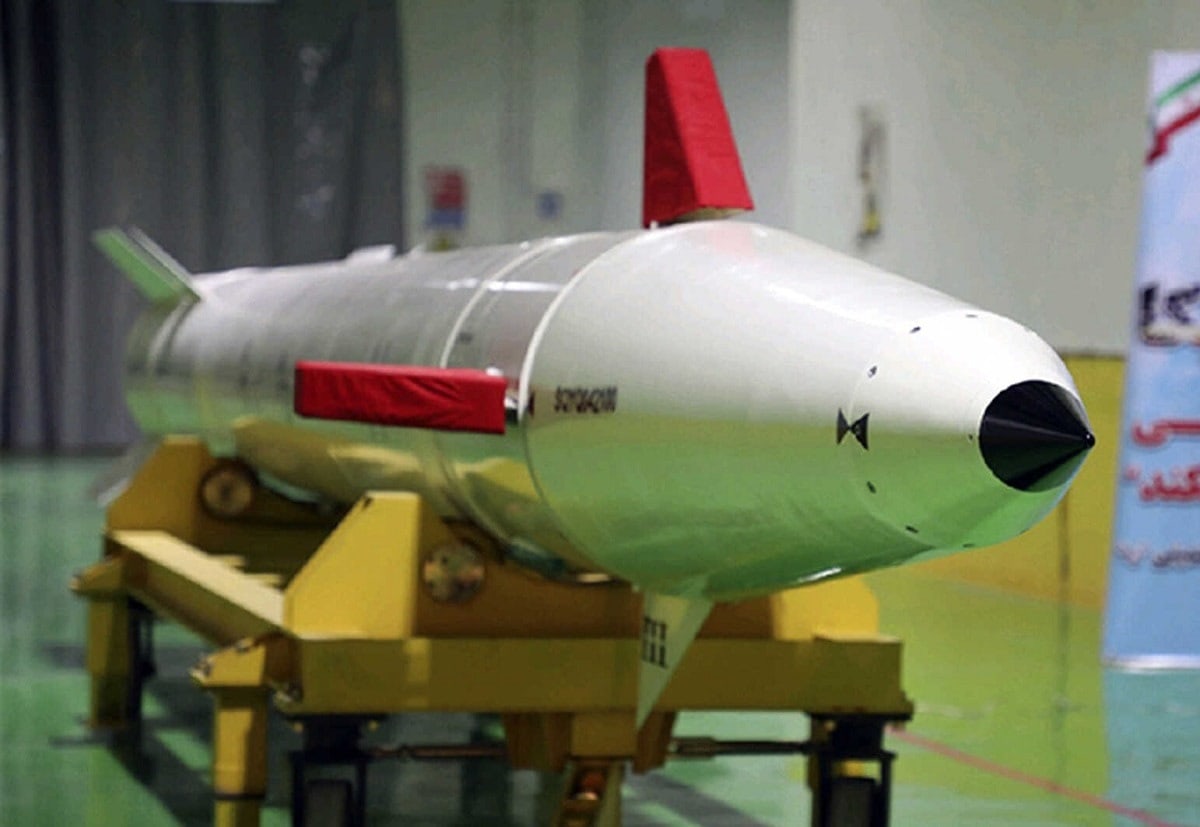Sept. 12 will mark the 20th anniversary of the first resolution criticizing Iran by the International Atomic Energy Agency’s (IAEA’s) board of governors.
The board, a 35-nation body tasked with policymaking for the UN nuclear watchdog, issues such resolutions to pressure countries to comply with their nonproliferation safeguards obligations. In 2023, the Islamic Republic has still not fulfilled the demands of the original resolution, and it appears poised to make nuclear weapons at a time of its choosing.
A new approach is needed that refocuses Western attention on addressing Iran’s fundamental breaches of its nonproliferation obligations — and soon.
The strictly worded resolution passed by the board in September 2003 demanded that Tehran provide “a full declaration” under its safeguards agreement — the fundamental legal accord that parties to the Nuclear Non-Proliferation Treaty reach with the IAEA to ensure international oversight and the peacefulness of their nuclear programs.
The resolution followed international discovery in mid-2002 of Iran’s vast, secret nuclear program, including a uranium enrichment site at Natanz and Iran’s acquisition and processing of uranium. Both breached Tehran’s safeguards agreement, because Iran failed to report them.
To support the IAEA’s “verification of the correctness and completeness of Iran’s declarations,” the first resolution also demanded unrestricted access to Iranian sites and environmental sampling, which would enable the agency to detect traces of nuclear materials. The board requested Tehran answer the agency’s questions about the origins of its nuclear activities, give details about experimentation, and provide any other information or explanations the agency deemed necessary.
Twenty years later, Iran has not remedied “all failures identified by the Agency” or cooperated “fully with the Agency to ensure verification of compliance with Iran’s safeguards agreement,” as the original resolution stipulated. The board has since passed 15 other Iran resolutions. In 2006, it referred Iran’s case to the UN Security Council, which passed a series of sanctions against Tehran.
The United States, Europe, and their partners have tried nuclear deals — most systematically the 2015 Joint Comprehensive Plan of Action, which Washington left in 2018 — but to little success. Iran pockets concessions without meaningful reciprocation.
Since 2018, the IAEA remains embroiled in a fruitless investigation of information the agency learned from an Israeli raid on a Tehran warehouse. The raid’s findings indicated that Iran had a full-fledged nuclear weapons program up until mid-2003 called the Amad Plan.
The pilfered materials suggested Iran likely retains some of its nuclear weapons-related work, today overseen by the Organization of Defense Innovation Research, known by its Persian acronym, SPND. Under SPND, Tehran advances disparate activities at locations not inspected by the IAEA.
Tehran initially refused IAEA access to sites so that Iran could remove evidence. Yet when the IAEA succeeded in detecting undeclared nuclear material and disclosed facts about Iranian nuclear weapons activities, as it did in March 2022 and May 2023, the international community failed to put meaningful pressure on the IAEA to probe deeper, or on Iran to cooperate more.
In its Iran safeguards report for September, the IAEA still could not verify the correctness and completeness of Iran’s declarations. In short: The IAEA is unable to provide credible assurances of the peaceful nature of Tehran’s nuclear program.
Iran now has thousands of advanced centrifuges spinning at fortified enrichment locations, and the capability to produce enough weapons-grade uranium for several nuclear bombs in under three months. It may be building a new enrichment site deep in the mountains near Natanz that would be immune to even the strongest U.S. bunker-buster bombs. Tehran is limiting IAEA monitoring of its nuclear sites and activities, withdrawing cameras, and restricting inspections. Iran advances its nuclear program, waiting for an opportune time to cross the nuclear threshold.
A reported new arrangement between Tehran and the Biden administration requires just token reductions of Iran’s capabilities in return for significant sanctions relief. Thus far, according to the IAEA’s latest reporting, these regime concessions appear illusory. The West heralds this as a win, but the Islamic Republic remains a nuclear threshold state.
The United States and its partners must act.
They must demand a new, comprehensive, and verifiable declaration by Tehran of all nuclear activities, past and present, and direct the IAEA to undertake a large-scale investigation backed by full Iranian cooperation. The investigation must include access to sites and equipment, personnel interviews, and provision of documentation. It is indispensable that the IAEA inspect all installations and institutes involved in the pre-2003 Amad Plan — something it has not yet done.
Moreover, absent a halt to Iran’s uranium enrichment program, Tehran’s full cooperation with the IAEA, and a deep IAEA investigation into the regime’s ongoing nuclear weapons activities, Washington and its partners should not authorize further sanctions relief for Iran.
The 20th year of the Iran nuclear crisis is upon us. Unless the West pivots soon and changes its lackadaisical approach, the result could be a regime that need not rush. Under the world’s watch, it will simply stroll to possession of atomic weapons.
Olli Heinonen is a distinguished fellow at the Stimson Center and served for 27 years at the International Atomic Energy Agency (IAEA), most recently as deputy director-general. Andrea Stricker is deputy director of the nonproliferation and biodefense program and a research fellow at the Foundation for Defense of Democracies (FDD). Follow them on X @OlliHeinonen and @StrickerNonpro.

